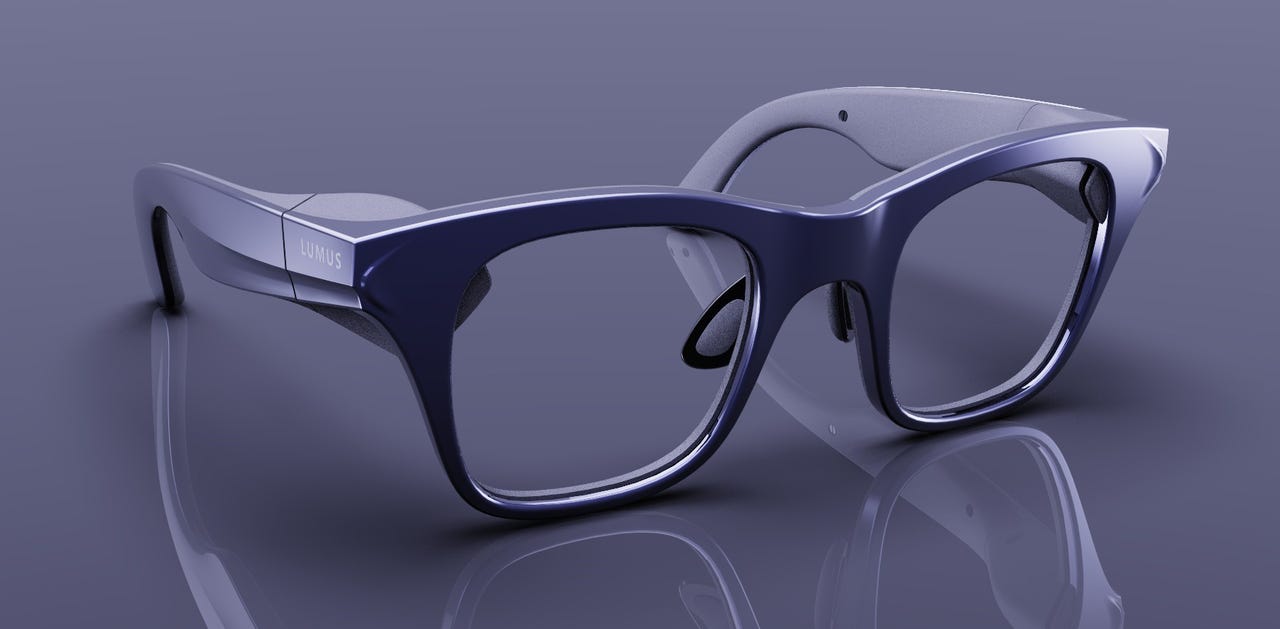































 Image: Lumus
Image: Lumus Lumus, an Israeli augmented reality (AR) optics company that specialises in reflective 2D waveguide technology, has launched the latest generation of its display architecture at CES 2023 in Las Vegas.
Find all the exciting innovation from CES 2023 in this special feature.
Read nowAR, where digital information is integrated with your view of the real world to deliver an enhanced overall experience, has yet to make a significant impact in the consumer market. The reason, says Lumus CEO Ari Grobman, is that AR glasses "need to be impressive both functionally and aesthetically" -- which is something he says the new Lumus technology addresses: "With Z-Lens, we're aligning form and function, eliminating barriers-of-entry for the industry and paving the way for widespread consumer adoption."
According to Lumus, its new 2D Z Lens technology will enable "smaller, lighter AR eyeglasses with high-resolution image quality, outdoor-compatible brightness and seamless Rx [prescription lens] integration."
Also: CES 2023 preview: 4 big questions that will shape the week
The stakes in the consumer AR market are high, with big players including Meta, Google and Apple all working on products that, if successful, could transform the way we interact with the real world in years to come.
Founded in 2000, Lumus has built an IP portfolio around its reflective waveguide technology, which comprises a micro-projector (microLED, LCoS or laser) and a series of transflective partial mirrors that expand the image across the X and Y axes (hence the '2D' nomenclature). This enables a usable field of view while accommodating the tiny projector in the temple of the glasses frame. An alternative approach -- employed by WaveOptics, among others -- uses diffractive waveguides, which normally inject light from the micro-projector perpendicular to the waveguide.
Commenting on the superiority of reflective versus diffractive waveguide technology, David Goldman, VP of marketing at Lumus, told : "The brightness and battery efficiency have been confirmed by outside experts to be anywhere from 3-10X higher than competing solutions. This means that not only are Lumus reflective waveguides brighter but they require much less battery power to achieve their brightness. Another area Lumus is different from the competition is color uniformity: this means that unlike all other waveguides, Lumus waveguides do not need to break up and reassemble color. Our single waveguides use mirrors to reflect the true color directly to the wearer's eyes. Most of the competing waveguides need 2-3 waveguides for each eye to achieve RGB (red, green, blue) for the full color spectrum."
Early AR products featuring Lumus technology were aimed at military and medical use cases, but more recently Lenovo used the company's optics in its enterprise-focused 2019 ThinkReality A6 headset. Now the company is targeting the potentially huge consumer market.
Lumus's current flagship technology is Maximus, which uses an LCoS micro-projector, offers a 50
 Hot Tags :
Tech
Wearables
Hot Tags :
Tech
Wearables